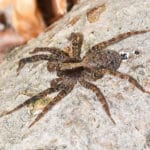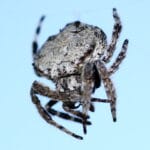This guide provides a comprehensive comparison of hobo spiders and brown recluses, covering identification, habitats, behavior, venom, and prevention strategies. Understanding the differences between these two often-confused spiders is crucial for accurate risk assessment and appropriate responses.
Identifying the Culprits
Mistaking a hobo spider for a brown recluse, or vice versa, is common. However, key differences in their appearance, webs, and preferred habitats can help you distinguish them.
Appearance
- Hobo Spider: Reddish-brown with faint chevron markings on the abdomen. Legs may have faint banding. Body size is roughly the size of a nickel (1/4 – 1/2 inch), and the leg span is about the width of your thumb (1-2 inches). They have eight eyes arranged in two rows.
- Brown Recluse: Light to dark brown, sometimes grayish, with a distinct violin-shaped marking on the cephalothorax (the fused head and chest). Six eyes arranged in three pairs (dyads). Legs are uniformly colored without stripes, with a smaller leg span compared to the Hobo spider (3/4 – 1 1/2 inches).
Webs
- Hobo Spider: Constructs funnel-shaped webs, often near ground level in basements, window wells, gardens, [https://www.lolaapp.com/] and stacks of wood.
- Brown Recluse: Creates messy, irregular, tangled webs hidden in undisturbed places like closets, storage areas, and behind furniture.
Habitat and Range
- Hobo Spider: Found primarily in the Pacific Northwest, favoring damp environments.
- Brown Recluse: Inhabits the central and southern United States, preferring dry areas. Their ranges rarely overlap. A hobo spider in Mississippi or a brown recluse in Maine would be exceptionally unusual.
Understanding Behavior
Observing spider behavior can offer further clues to their identity.
- Hobo Spider: More active, especially during mating season (late summer and fall), and may wander indoors. While sometimes perceived as aggressive, they likely bite defensively when threatened or trapped.
- Brown Recluse: True to its name, it’s reclusive and prefers undisturbed locations. Bites typically occur when the spider is accidentally pressed against the skin, such as when putting on clothing or shoes.
Venom and Bites: Separating Fact from Fiction
Perhaps the most significant concern regarding these spiders is their venom.
- Hobo Spider: While older studies suggested potential for necrotic lesions, current research from the CDC and others downplays this concern. Hobo spider bites may cause localized pain, redness, swelling, and sometimes blistering, similar to a bee sting, but serious complications are rare. Ongoing research continues to explore the effects of hobo spider venom.
- Brown Recluse: Venom contains sphingomyelinase D, an enzyme that can cause necrotic lesions. The severity of a bite varies depending on the amount of venom injected and individual sensitivity. Medical attention is necessary if a brown recluse bite is suspected.
Prevention and Control
Taking proactive steps can significantly reduce the likelihood of spider encounters.
- Cleaning: Regularly clean and vacuum, especially in undisturbed areas, to disrupt spider habitats and remove webs.
- Sealing: Seal cracks and crevices in your home’s foundation, walls, and windows to prevent spiders from entering.
- Decluttering: Reduce clutter both inside and outside to eliminate potential hiding spots, inside and outside the home.
- Woodpiles: Store firewood away from the house.
- Landscaping: Trim vegetation and brush near the house to reduce opportunities for spiders to get inside.
- Sticky Traps: Use sticky traps to monitor spider activity and identify problem areas.
- Professional Pest Control: Consult a professional pest control service for serious infestations.
What to Do if You Think You’ve Been Bitten
- Clean the bite: Wash the area thoroughly with soap and water.
- Apply a cold compress: This can help reduce swelling and discomfort.
- Elevate the affected area: If the bite is on an arm or leg, elevating it can help minimize swelling.
- Pain relief: Over-the-counter pain relievers can help manage any pain.
- Capture the spider (if safe): If possible, capture the spider, even if it’s dead, for identification. This can greatly aid diagnosis and treatment.
- Seek medical attention: If symptoms worsen, you experience any systemic reactions (like fever or chills), or you suspect a brown recluse bite, seek medical attention immediately.
Understanding the characteristics and habits of both hobo spiders and brown recluses empowers you to accurately assess risks and react appropriately. While both spiders can bite, the potential medical consequences differ significantly. Remember, accurate identification is essential, and consulting with a medical professional is always recommended for any spider bite, especially if you’re unsure of the species.
Interested in other wildlife? Uncover the secrets of the whitetail deer’s reproductive cycle and learn fascinating details about the gestation period of whitetail deer.
- Unlock Elemental 2 Secrets: Actionable Insights Now - April 2, 2025
- Lot’s Wife’s Name: Unveiling the Mystery of Sodom’s Fall - April 2, 2025
- Photocell Sensors: A Complete Guide for Selection and Implementation - April 2, 2025
















